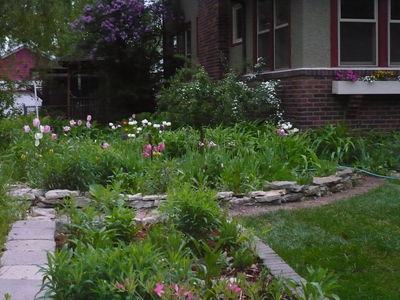
Difference between revisions of "Pollinator friendly Best Management Practices for stormwater management"
m |
m |
||
| Line 5: | Line 5: | ||
Vegetated stormwater BMPs can be designed to be pollinator-friendly. It is clear that pollinators, both vertebrates and invertebrates, are in decline (see [http://www.esa.org/ecoservices/poll/body.poll.scie.decl.html], [http://www.nytimes.com/2016/02/27/science/decline-of-species-that-pollinate-poses-a-threat-to-global-food-supply-report-warns.html?_r=0], [http://www.sciencemag.org/news/2014/10/decline-bees-and-other-pollinators-could-worsen-global-malnutrition], [http://ento.psu.edu/pollinators/resources-and-outreach/globally-pollinators-are-in-decline], [http://www.fws.gov/pollinators/]). This page provides numerous links to information that can be used in designing and implementing pollinator-friendly stormwater BMPs. | Vegetated stormwater BMPs can be designed to be pollinator-friendly. It is clear that pollinators, both vertebrates and invertebrates, are in decline (see [http://www.esa.org/ecoservices/poll/body.poll.scie.decl.html], [http://www.nytimes.com/2016/02/27/science/decline-of-species-that-pollinate-poses-a-threat-to-global-food-supply-report-warns.html?_r=0], [http://www.sciencemag.org/news/2014/10/decline-bees-and-other-pollinators-could-worsen-global-malnutrition], [http://ento.psu.edu/pollinators/resources-and-outreach/globally-pollinators-are-in-decline], [http://www.fws.gov/pollinators/]). This page provides numerous links to information that can be used in designing and implementing pollinator-friendly stormwater BMPs. | ||
| − | {{alert|Although the following links provide information on pollinator friendly practices, it is important to remember the primary function of a stormwater BMP is to manage stormwater. In particular, it is important to ensure that plants selected as being pollinator friendly must also function well within the stormwater practice. See [http://stormwater.pca.state.mn.us/index.php/Design_criteria_for_bioretention#Landscaping Design criteria for bioretention] and [http://stormwater.pca.state.mn.us/index.php/Minnesota_plant_lists Minnesota plant lists] for more information|alert-warning}} | + | {{alert|Although the following links provide information on pollinator friendly practices, it is important to remember the primary function of a stormwater BMP is to manage stormwater. In particular, it is important to ensure that plants selected as being pollinator friendly must also function well within the stormwater practice. See [http://stormwater.pca.state.mn.us/index.php/Design_criteria_for_bioretention#Landscaping Design criteria for bioretention] and [http://stormwater.pca.state.mn.us/index.php/Minnesota_plant_lists Minnesota plant lists] for more information.|alert-warning}} |
==Pollinator friendly plants== | ==Pollinator friendly plants== | ||
Revision as of 18:06, 11 May 2016
An increasing focus on Green Infrastructure has brought an awareness that stormwater management can provide numerous benefits beyond improving water quality and urban hydrology. Trees, for example, provide a multitude of benefits beyond stormwater management, as discussed in this article. In particular, vegetated stormwater best management practices (BMPs), including tree-based systems and other bioretention systems, offer opportunities to achieve multiple benefits, ranging from aesthetics (see, for example, this presentation by Dr. Steven Rodie from the University of Nebraska - Omaha) to ecosystem friendly designs.
Vegetated stormwater BMPs can be designed to be pollinator-friendly. It is clear that pollinators, both vertebrates and invertebrates, are in decline (see [1], [2], [3], [4], [5]). This page provides numerous links to information that can be used in designing and implementing pollinator-friendly stormwater BMPs.
Pollinator friendly plants
- Metro Blooms: Planting for Pollinators: How Raingardens Can Help
- The Xerces Society for invertebrate Conservation: Pollinator plants - Great Lakes Region
- Pollinator Partnership: Ecoregional Planting Guides
- United States Department of Agriculture - Forest Service: Attracting Pollinators to Your Garden Using Native Plants
- National Wildlife Federation: Plants for Pollinators: A Collection of Favorites
Pollinator friendly practices
Although much of the information on these pages is general, many of the practices can be incorporated into vegetated stormwater BMPs.
- United States Department of Agriculture - Forest Service: Pollinator Friendly Practices
North American Pollinator Protection Campaign: Pollinator Friendly Practices Institute for Agriculture and Trade Policy: A landowner’s guide to pollinator-friendly practices
Case studies
- Andover garden tour is a pollinator-friendly showcase
- Andover Pollinator Awareness Project
- Penn State Extension
Other links
The Xerces Society: Targeted for gerdeners, this site contains much useful general information on pollinators and managing for pollinators Pollinator Friendly Alliance
